Thermal protective materials are crucial in many fields, including aerospace exploration, energy-related industry, and high-temperature manufacturing. Among them, aerogels are mostly studied and commercially used. However, their pursuits of higher porosity for the improvement of thermal insulation, in return, lead to poor connectivity among the pores, severely weakening their structural integrity and sacrificing their mechanical strength. In contrast, biological materials exhibit an unprecedented combination of mechanical and functional properties relying on their elegant multiscale micro- and nanostructure design.
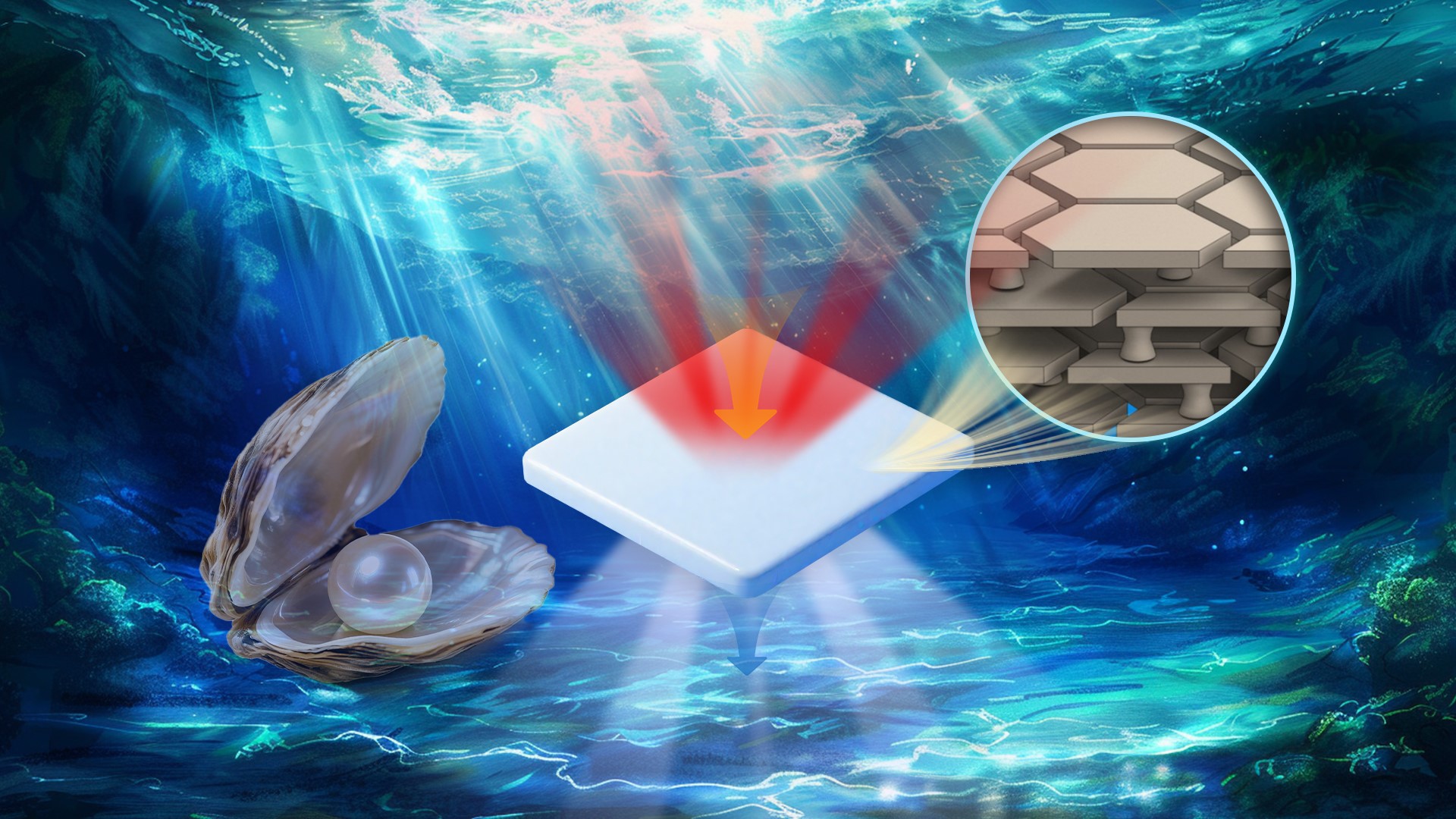
Inspired by nacre, a research team from the Southern University of Science and Technology (SUSTech) has developed a nacre-like porous ceramic, achieving the combination of thermal and mechanical properties. Their paper, titled “Anisotropically Thermal-Protective Porous Ceramics Enabled by Nacre-Like Framework”, has been published in Advanced Materials, a leading international journal.
The researchers first developed a bottom-up film-to-bulk assembly strategy to fabricate nacre-like porous ceramics. This approach combined nanofiber-assisted evaporation-induced self-assembly, lamination, and pressure-less sintering (Figure 1). In the nacre-like porous ceramic, the highly aligned alumina microplatelets generated layered porosities, while the interconnected mineral bridges among these microplatelets consolidated the ceramic framework.
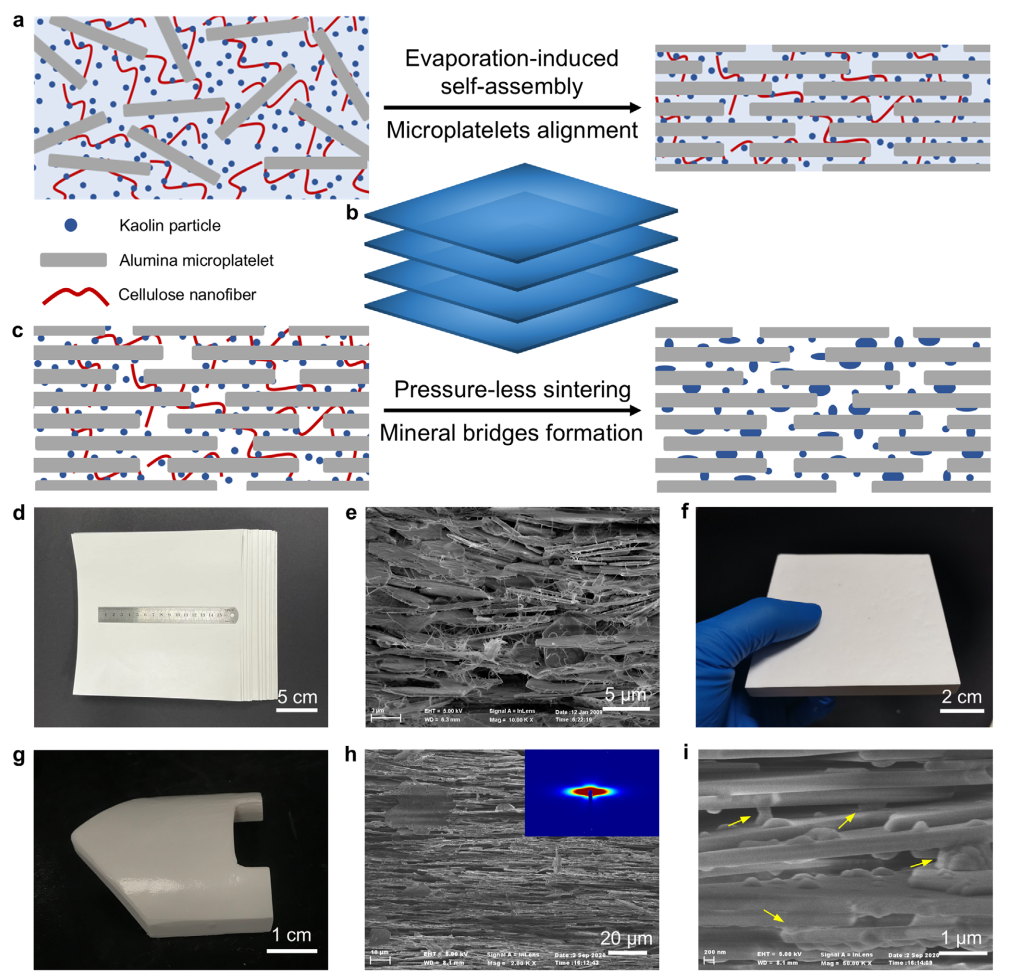
Figure 1. Fabrication and characterizations of the nacre-like porous ceramic. a-c) Schematic illustration of the fabrication process for the nacre-like porous ceramic. d) Digital photograph of the nacre-like composite film. e) Scanning electron microscopy (SEM) image of the nacre-like composite film. f-g) Digital photographs of the nacre-like porous ceramic. h-i) SEM images of the nacre-like porous ceramic.
Next, the team produced a series of nacre-like porous ceramics with different tunable microstructures by using different sintering temperatures (Figure 2). Mechanical and thermal tests were carried out to study the influence of the different microstructures. The optimized nacre-like porous ceramic demonstrated a good combination of mechanical and thermal properties. The underlying reason can be attributed to the scaffold with layered alumina microplatelets connected by mineral bridges. The layered porous structure endowed the material with good thermal insulation properties, while the mineral bridges enabled efficient stress transfer through the scaffold.
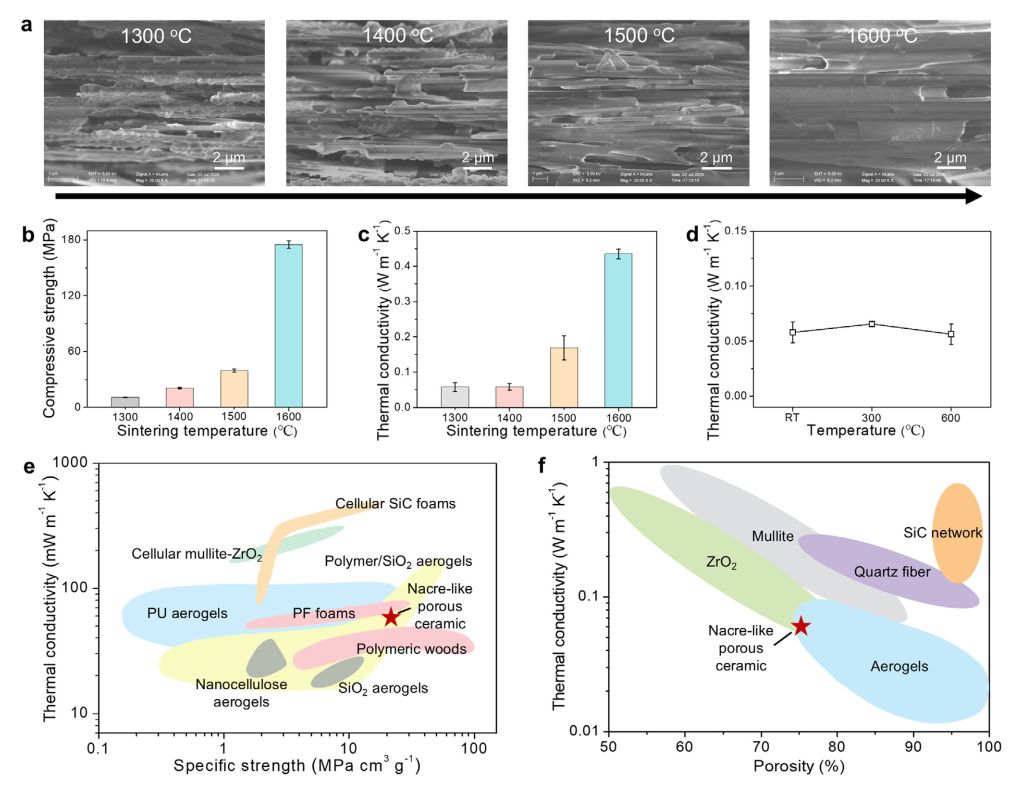
Figure 2. Mechanical and thermal properties of the nacre-like porous ceramics. a) SEM images of a series of nacre-like porous ceramics fabricated using different sintering temperatures. b) Compressive strength of a series of nacre-like porous ceramics fabricated using different sintering temperatures. c) Thermal conductivity of a series of nacre-like porous ceramics fabricated using different sintering temperatures. d) Thermal conductivity of the nacre-like porous ceramic under different temperatures. e-f) Comparison between the nacre-like porous ceramic and previously reported thermal protective materials.
The researchers found that the nacre-like porous ceramics have an intriguing anisotropy of thermal conductivity on in-plane and out-plane directions (Figure 3). On the one hand, the thermal conductivity on the out-plane direction was low, exhibiting a good thermal insulation property. On the other hand, the thermal conductivity on the in-plane direction was relatively high, showing a thermal conductive ability to avoid heat concentration on the outer surface of the material.
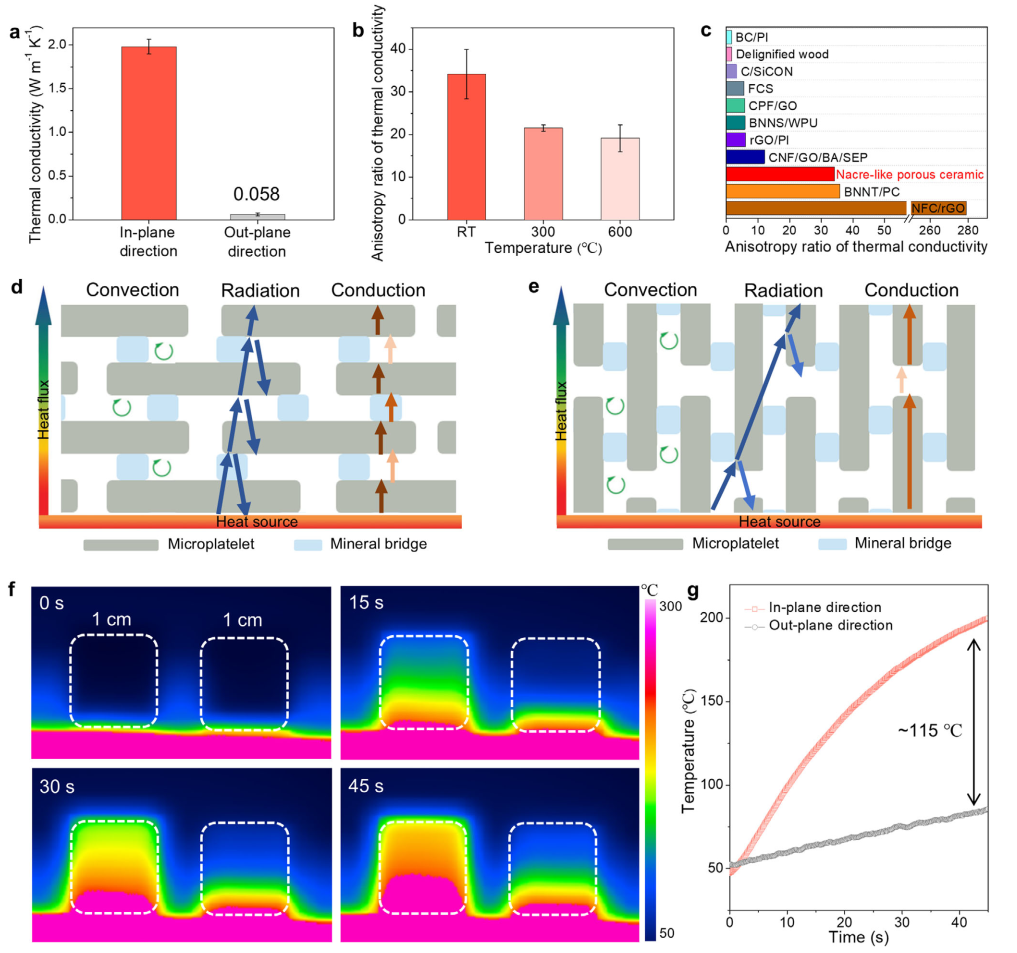
Figure 3. Anisotropic thermal properties of the nacre-like porous ceramic. a) In-plane and out-plane thermal conductivity of the nacre-like porous ceramic. b) Anisotropy ratio of thermal conductivity under different temperatures. c) Comparison of anisotropy ratio between the nacre-like porous ceramic and previously reported thermal protective materials. d-e) Schematic illustration of anisotropic thermal conductivity in the nacre-like porous ceramic. f-g) Temperature variations of the nacre-like porous ceramics on a hot plate with different locating directions.
To further assess thermal protection performance, they conducted a fire-resistance test (Figure 4). Relying on its all-ceramic constituent, the material maintained its structural integrity. The temperature of the back surface of the nacre-like porous ceramic, recorded by thermal infrared camera, stayed at a low level, indicating the excellent fire-resistance and thermal protective performance.
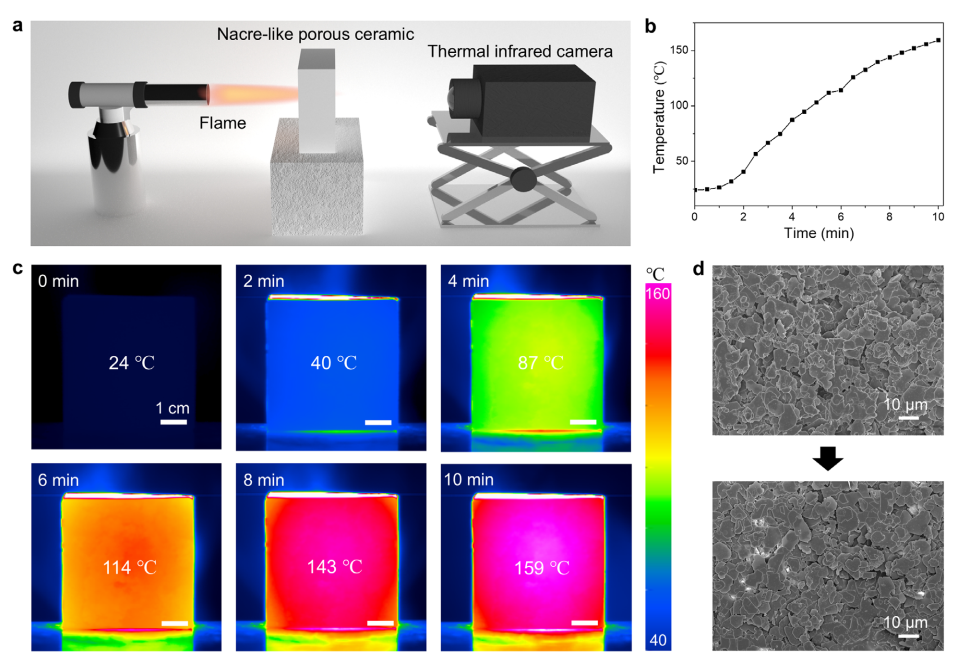
Figure 4. Fire-resistance of the nacre-like porous ceramic. a) Schematic illustration of the fire-resistance test. b-c) Temperature variations of the back surface of the nacre-like porous ceramic under fire-resistance test. d) SEM images of the surface of the nacre-like porous ceramic before and after high-temperature treatment.
This work presents a bottom-up film-to-bulk assembly approach for fabricating nacre-like porous ceramic. This unique layered porous microstructure enables the combination of mechanical robustness and thermal insulation. The highly ordered structure endows the material with a high anisotropy of thermal conductivity on out-plane and in-plane directions, which is beneficial for thermal protection and heat management. Therefore, this material is promising as an integrated thermal protection material for practical applications in diverse technical fields.
Postdoctoral researcher Zhen-Bang Zhang from the Department of Materials Science and Engineering at SUSTech is the first author of the paper. SUSTech is the primary and corresponding institution for this work.
Paper link: https://advanced.onlinelibrary.wiley.com/doi/10.1002/adma.202506308
To read all stories about SUSTech science, subscribe to the monthly SUSTech Newsletter.
Proofread ByAdrian Cremin, Yuwen ZENG
Photo ByDepartment of Materials Science and Engineering